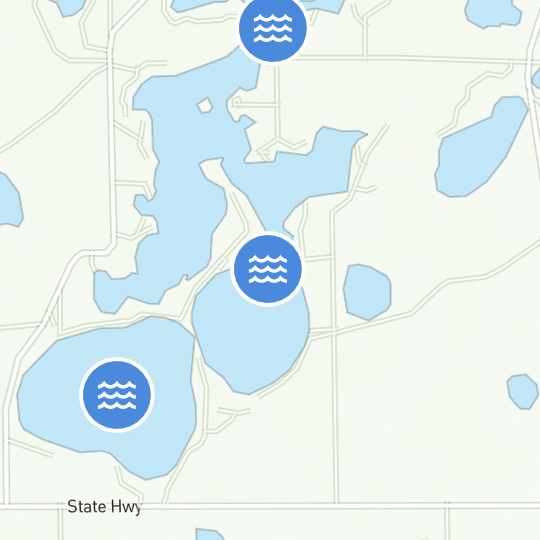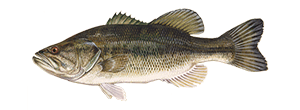Flats and Backwater Fishing
Backwater fishing or flats fishing are two terms that are used to describe fishing from a flats boat or skiff in shallow inshore saltwater areas. Learn more about the different areas where you can catch more fish.
Welcome to the world of backwater and flats fishing! Discover how to fish in shallow waters as we guide you through the essentials. From choosing the right gear to exploring diverse fishing spots like saltwater inlets, marsh edges, and tidal flats, this introduction sets the stage for an exciting adventure.
Fishing Tackle For Backwater
Often there is a misconception that you have to head to the deep sea to catch trophy saltwater fish, but once you experience the fight of a 100-pound tarpon while fishing the saltwater flats, you will realize that this is not the case. There are plenty of hard-fighting saltwater fishing species to be found inshore as long as you do your research, have the right gear and know a few backwater fishing tips.
There are a variety of rods, reels and tackle that can be used for backwater and flats fishing. Here are a few tackle and gear suggestions:
- A 6 to 7-foot medium-action fishing rod with either a spinning or baitcaster reel
- A 15-pound test braided line or other light line
- Approximately 2 to 3 feet of 20 to 30-pound fluorocarbon leader line
- Hook sizes needed will vary depending on the size of the bait used, so you may want to keep a variety on hand in the 1/0 to 3/0 range
- A variety of lures from gold metal spoons to soft plastic jigs
TIP: Fly fishing is also a popular method of fishing the flats in Florida when targeting species like bonefish or tarpon. Flats fly fishing tackle is quite specialized and is great for intermediate to advanced angler.
Fishing Spots Where You Can Find Fish
Flats and backwater fishing areas are typically reached by boat. A small flats boat or fishing boat can be used, or even a kayak. If you are an intermediate angler and transitioning from freshwater fishing to saltwater fishing, the backwaters and flats will feel like familiar territory. These areas will often provide hours of action and feature structures that are home to many species, from flounder to spotted seatrout, all within a shallow inshore environment.
Saltwater Inlets
Because of the moving current, saltwater inlets are good places to fish and are typically marked by shallow sand bars or rocks that line deeper channels or sloughs. A couple of fishing tips: keep in mind that you'll need to locate the deeper water in order to find the fish. Predatory game fish will hide from the current behind structure in the shallower areas, while baitfish and prey will often congregate in the deeper water to hide.
Two tactics that tend to be effective when fishing saltwater inlets:
Drifting: Drift your boat through the deeper water or over and along the shoals while bouncing jigs or bottom rigs.
Anchoring: Anchor up and cast soft plastic lures, metal spoons or live baits up current, allowing them to drift down and sweep past the fish.
Marsh Or Mangrove Edges
Marsh or mangrove edges are another good place to target when fishing the flats. At low tide, fish will often scour the borders of the marsh grass or mangrove islands looking for prey. Look for water rushing in or out of a creek or estuary near the marsh or mangrove edges to find fish that are waiting to ambush bait.
Position your boat within casting distance of these edges and try a few different techniques. You can work a jig along the bottom, or try topwater fishing by casting out a live shrimp or baitfish rigged with a popping cork, or "walk the dog" using a torpedo-shaped top water plug along the marsh or mangrove edge.
Oyster Bars And Grass Beds
Oyster bars and grass beds are backwater reefs that support the marine food chain; however, fishing these areas can be a challenge since you'll need to avoid snagging your line on rough bottom or getting hung up in the grass. The best fishing techniques to use when backwater fishing around oyster bars or grass beds involve suspending your bait over the rough bottom using a popping cork, top water lure or a jig. Fish will patrol the outside edges of the bars and grass beds looking for prey that wanders too far away from the safety of the reef, so fish the edges and carefully work your boat over the reef.
TIP: Boats equipped with a trolling motor or push pole will be an advantage when moving over structure to avoid spooking the fish.
Channels
Channels, creeks and rivers will always feature the deepest water and often the best backwater fishing. Not only will predatory game fish patrol these cuts, but bottom dwellers will also congregate in the deeper holes, making channels the ideal places to catch a variety of fish. Larger fish will be looking for prey that ventures out of the deep water, so a jig worked along the edge of the drop or through the deepest parts of the channel will often entice them to bite. Saltwater panfish, such as grunts or croakers, also tend to school up in the deepest sections of the channel and can be targeted by bouncing your bait along the bottom using a top-bottom rig or Carolina rig.
Channels Entrances
Anywhere water is forced to move through a smaller opening, currents run faster and dig deeper into the bottom. Fish will be attracted to these places because the water is deeper and the supply of food is more concentrated in the “pinched’ area.
Tidal Flats
Sand and mud bottom tidal flats are very shallow areas that are typically a few inches to a few feet deep and are sometimes even exposed at lower tides. These flats are commonly found in many estuarine areas and are highly productive for fishing. These areas are protected from wave action and are often comprised of mud or sand transported by tidal channels.
Potholes
Potholes are areas located within the grass flats that are void of grass, and that have sandy or muddy bottoms. Potholes vary in shape and size by several yards to just a few feet. Potholes are good areas to target when fishing the flats because saltwater game fish, such as redfish or sea trout, will often sit near the grassy edges of a pothole waiting for baitfish or crustaceans as they move across the sandy or muddy bottom. One of the best backwater fishing tips for redfish is to cast a popping cork rigged with a live shrimp or pinfish into one of these open sandy or muddy pothole areas. You'll very likely experience a strike if you're fishing during a running tide.
Once you've become accustomed to backwater fishing and flats fishing techniques and have equipped yourself with the best backwater bait and tackle, you will be ready to challenge yourself by developing new skills and taking a deep sea or offshore fishing trip on the open ocean.
Visit the saltwater fishing FAQ section to find more tips on catching saltwater species.
KEEP LEARNING

How to Tie the Non-Slip Loop Knot
The non-slip loop knot is a popular and reliable choice for securing hooks, lures, and other tackle to your fishing line.
LEARN MORE

Socials
Take me fishing social media links
LEARN MORE

TakeMeFishing x Teen Vogue
Join us on a creative journey as fashion designer Ahmrii Johnson walks us through her collaborative vision and process with Teen Vogue and fashion brand, Rentrayage, to create a special piece.
LEARN MORE


.png?lang=en-US&ext=.png)